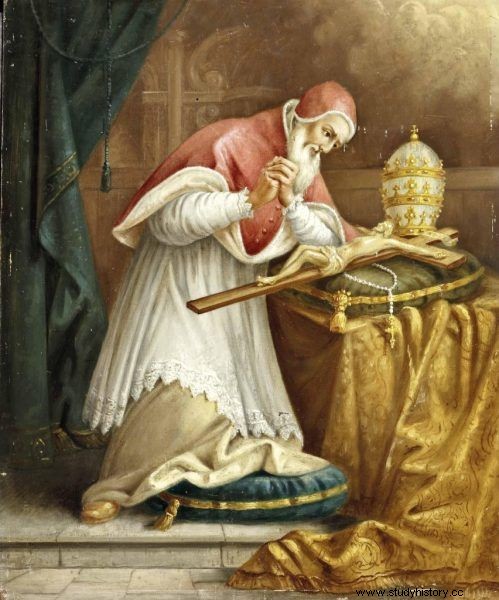Renaissance Rome basked in debauchery for a long time. In the mid-sixteenth century, however, the ascetic pope began a ruthless fight against Roman prostitution. How did this battle end?
Renaissance prostitution was not a taboo subject for a long time. The famous courtesans accumulated dizzying fortunes, became artists' muses and lovers of elite representatives. The success of Roman metres often depended on the debauchery of successive popes, so they often acted openly during the Renaissance. Often clergy even owned "houses of pleasure."
A campaign to eliminate this practice was launched by Pope Paul IV. It was he forbid the merestresses who ostentatiously presented their lifestyle from using public carriages. This prohibition was to discourage the faithful (or rather the faithful) from following in the footsteps of the Roman courtesans, should they come up with the idea of gaining prestige, wealth and pleasure in this way. The worst enemy of prostitution, however, was his successor, Pius V.
A zealous inquisitor
Pius V, whose pontificate falls on the years 1566-1572, is also called an ascetic pope. In processions he wore hair, barefoot and without a hat. His mission was to fight heresy - so for many years he was a ruthless inquisitor. He also intended to introduce monastic rules throughout Rome.

Even Pope Pius V ultimately failed to drive the prostitutes out of Rome
Controversies are also raised, among others, by one of his bulls, according to which doctors were obliged to refuse to help the patient if he had not presented a confession certificate from the last three months . No wonder he quickly declared war on the famous Italian courtesans.
War against harlotry
One of the pope's most important and loudest decisions was to issue a decree ordering all prostitutes to leave Rome. On the day the edict was announced, Pius chose a non-accidental date - St. Mary Magdalene. On June 20, 1566, the inhabitants of Rome learned that the prostitutes were to leave the city within six days. Interestingly, this decision caused fierce resistance from the public:
The city senate sent a delegation of forty citizens to lodge a protest with the Pope. The implementation of the edict would have to cause a serious economic crisis. It would lead to the depopulation of the city, a sharp decline in the import of luxury goods, and the bankruptcy of respected merchants. The diplomatic corps was concerned, and the ambassadors of Spain, Portugal and Florence added their own protests.
Merchants, who were often creditors of Roman courtesans, feared that in this situation they might not recover the money they borrowed. Another argument of the senators was that wherever celibacy is valid, debauchery inevitably occurs . So when the harlots are driven outside the walls, priests will "necessarily" attack decent and virtuous women.
When twenty-five thousand people (prostitutes and professionals associated with them) began to prepare to leave the city, panic broke out .
Less than a month after the edict was issued, the pope was forced to cancel it. However, he found a different solution to the problem. The activity of Roman prostitutes was now to be limited to the Trastevere region - it was a return to the ancient system.
The courtesans were also forced to wear distinctive garments - it was a long tunic and a veil that was supposed to cover their eyes and mouth.

Pius V tried to kick all prostitutes out of Rome
However, the Pope called on prostitutes to get married as soon as possible. The reluctant ones were flogged.
What does the rest of Italy say?
The changes introduced by Pius V, however, were limited (at least initially) to the capital itself. In other cities such as Florence and Venice, dependent women have been welcomed. It was in Florence that the famous houses of debauchery were built - La Pisanella and La Maiorchina. After some time, however, and here prostitution was brought to a peculiar ghetto, creating districts of pleasure.
However, it was completely different in the sinful Venice, which for many years ignored church regulations and the practice flourished. He was also favored by the famous Venetian carnival, during which there was a complete loosening of morals. Hidden under masks, men and women entered every brothel in the city with impunity. Venetian houses of debauchery became famous all over the world.
Bibliography:
- Nickie Roberts, Whores in History. Prostitution in Western society, Wydawnictwo Alfa 1997,
- Monica Garcia Massaque, History of brothels. history of pleasure houses from antiquity to modern times, Bellona 2009
- The cardinal's deadly mega-orgasm, that is, the relationship between the prostitute and the Church, But history! Wybcza.pl [accessed on 15/01/2020]
